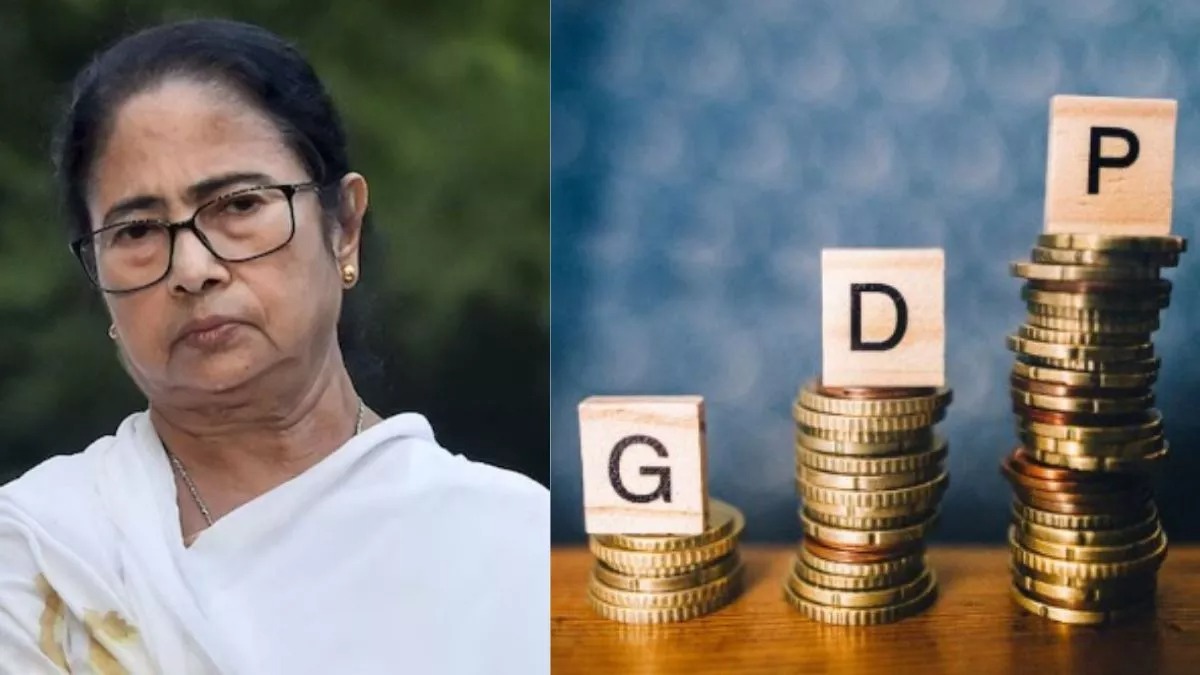
New Delhi: Bengal's share in the country's gross domestic product (GDP) has been steadily declining over the past several decades, according to the Economic Advisory Council to the Prime Minister (EAC-PM), while the development of the eastern part of the country remains a matter of concern.
On the other hand, except Bengal, other coastal states have performed better than other states of the country. As far as Bihar is concerned, its position has remained stagnant in the last two decades and it is far behind other states. To catch up with them, it will have to develop very fast.
The share will be 5.6 in 2023-24
According to a working paper titled 'Relative Economic Performance of Indian States: 1960-61 to 2023-24', Bengal was the third largest contributor to the national GDP in 1960-61 with a share of 10.5 per cent. Whereas in 2023-24, its share has declined to only 5.6 per cent.
Bengal's share in GDP has fallen steadily throughout this period. Not only this, Bengal's per capita income was 127.5 percent of the national average in 1960-61, but in 2023-24, per capita income fell to 83.7 percent of the national average. This is also less than traditionally backward states like Rajasthan and Odisha.
The southern states left the other states behind
Southern states performed better after economic liberalisation According to a working paper authored by EAC-PM member Sanjeev Sanyal, India's western and southern regions performed significantly better than the rest of the country from 1960-61 to 2023-24. The southern states outperformed other regions after economic liberalisation in 1991. The five states (Karnataka, Andhra Pradesh, Telangana, Kerala and Tamil Nadu) collectively account for about 30 per cent of India's GDP in 2023-24.
After economic liberalisation, the per capita income of all the southern states became higher than the national average. Delhi has the highest per capita income during the study period. Maharashtra, Bengal and Tamil Nadu had the largest number of industrial clusters in the sixties of the last century. However, their situations changed thereafter and industries started disappearing from Bengal. Tamil Nadu gained the lead after 1991. Gujarat overtook Maharashtra in per capita income Gujarat has increased its share in the country's GDP in the last two decades. The state's share increased from 5.8 per cent in 1960-61 to 6.7 per cent in 1970-71.
However, it remained broadly at the same level till 2000-01, but increased to 8.1 per cent in 2022-23. It is interesting to note here that Gujarat and Maharashtra were the same state till the sixth decade of the last century. Gujarat's per capita income increased from 118.3 in 1960-61 to 160.7 per cent of the national average. Initially, Gujarat lagged behind Maharashtra. In 1960-61, Maharashtra's per capita income was 133.7 per cent of the national average. However, in 2023-24, Gujarat's per capita income has increased to 160.7 per cent of the national average, while Maharashtra's per capita income remained at 150 per cent. The working paper states that the western and southern states of India have performed well compared to other provinces of the country.
Haryana's share in country's GDP more than Punjab Haryana's share in country's GDP has now exceeded that of Punjab with its per capita income rising to 176.8 per cent in 2023-24 compared to Punjab's 106.7 per cent. The two states were once part of the same state. Punjab's share in GDP rose in the 1960s mainly due to the Green Revolution, but then stagnated at around 4.3 per cent until 1990-91 and then started declining, finally reaching 2.4 per cent in 2023-24. In contrast, Haryana's share has been rising steadily and has remained relatively stable since 2010-11.
Haryana's share in India's GDP in 2023-24 was 3.6 per cent. It is expected that Gurugram's success may be due in part to Haryana's growing share. The paper also raises the question whether Punjab's excessive focus on agriculture is akin to 'Dutch disease', which is hindering industrialisation. Dutch disease is understood in economics as a condition where it leads to growth in a specific sector while not enough development takes place in other sectors.
Read More: This country admired India's economy, saying - India is progressing rapidly.
--Advertisement--

 Priya
Priya Share
Share



